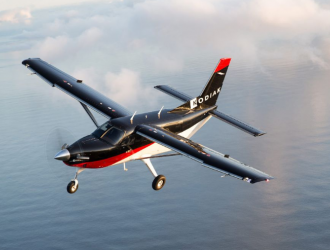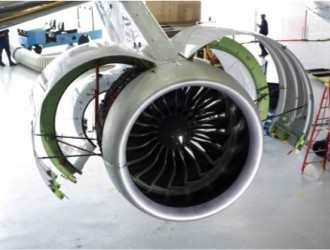Accessing the biennial Airshow China gathering in Zhuhai is by no means easy – for aviation journalists, at least. There is considerable bureaucracy involved in securing a “J2” visa, and once in Zhuhai itself, hotel rates jump by five or six times during show week. It is also challenging to get affordable transport out to the show, which is a 90min drive away, and once there, the entrances change daily.
It is as if the organisers are unconsciously channelling the anti-access/area denial (A2/AD) strategy that is so much a part of Chinese military planning. Airpower elements of A2/AD, which broadly aims to push enemy forces a good distance from Chinese territory, have been evident at the last few editions of the show.
The 2010 version saw a missile-carrying unmanned air vehicle – the China Aerospace and Science Corporation WJ-600 – depicted striking a US Navy Arleigh Burke-class destroyer with an air-to-surface missile, while also vectoring long-range, truck-launched missiles against a US aircraft carrier, in a promotional video. And in 2014, just months after the shooting down of Malaysia Airlines flight MH17 over Ukraine, the static display area featured a large park full of mobile radar systems and long-range surface-to-air missiles.

All eyes will be on the J-31 at this year's event
Quite apart from the bombast, the show is eagerly awaited among China-watchers for what it can reveal about Beijing’s airpower ambitions: particularly in the areas of frontline combat aircraft, which would play a key role in the A2/AD strategy.
One aircraft that was notably absent from the 2014 Zhuhai show was the Chengdu J-20. This aircraft, which first appeared in 2010, is a large, twin-engined jet boasting canards and a twin canted tail. Social media reports from China have covered its flight test campaign exhaustively. Reportedly it has entered low-rate initial production, with the 11th aircraft produced.
Half a decade after its emergence, official word about this fighter is virtually non-existent. Little is known about how many will be procured, or even the specific roles of the jet. A telling blog entry was re-posted by the defence ministry on its website in early September, stating that Indian media was being “over-sensitive” to the appearance of the J-20 in Tibet. Apparently the aircraft was there for testing in high-altitude conditions, and India’s sensation-addicted media pounced on a juicy story. The blog entry went on to say that the J-20 is not likely to be deployed in China’s west, but rather along its oceanic frontier.
Despite the secrecy around the programme, and China observers’ obsession with the type, Malcolm Davis, senior analyst of defence strategy and capability at the Australian Strategic Policy Institute, says the J-20 needs to be taken seriously.
“Clearly J-20 is important in terms of wher it takes the [People’s Liberation Army Air Force’s] long-range anti-access/area denial capabilities,” he says.
“The aircraft is not so much a competitor to the [Lockheed Martin] F-22 or F-35, but instead is designed to strengthen China’s ability to undertake long-range counter-air operations against critical combat support platforms, such as airborne early warning and control and air-to-air refuelling. If these platforms can be pushed back beyond useful range, China’s A2/AD is strengthened considerably – particularly as carrier-based airpower is likely to be pushed back similarly by anti-ship ballistic missiles. If this happens, then the F-35C becomes somewhat irrelevant, and F-35As operating forward are vulnerable anyhow, so the whole US and allied air capability within the second island chain is weakened.”
The “second island chain” Davis refers to stretches roughly from the Kurile Islands in the north Pacific to the Marianas and Palau Islands in the south. US allies such as Japan, the Philippines and South Korea are well within its bounds.





